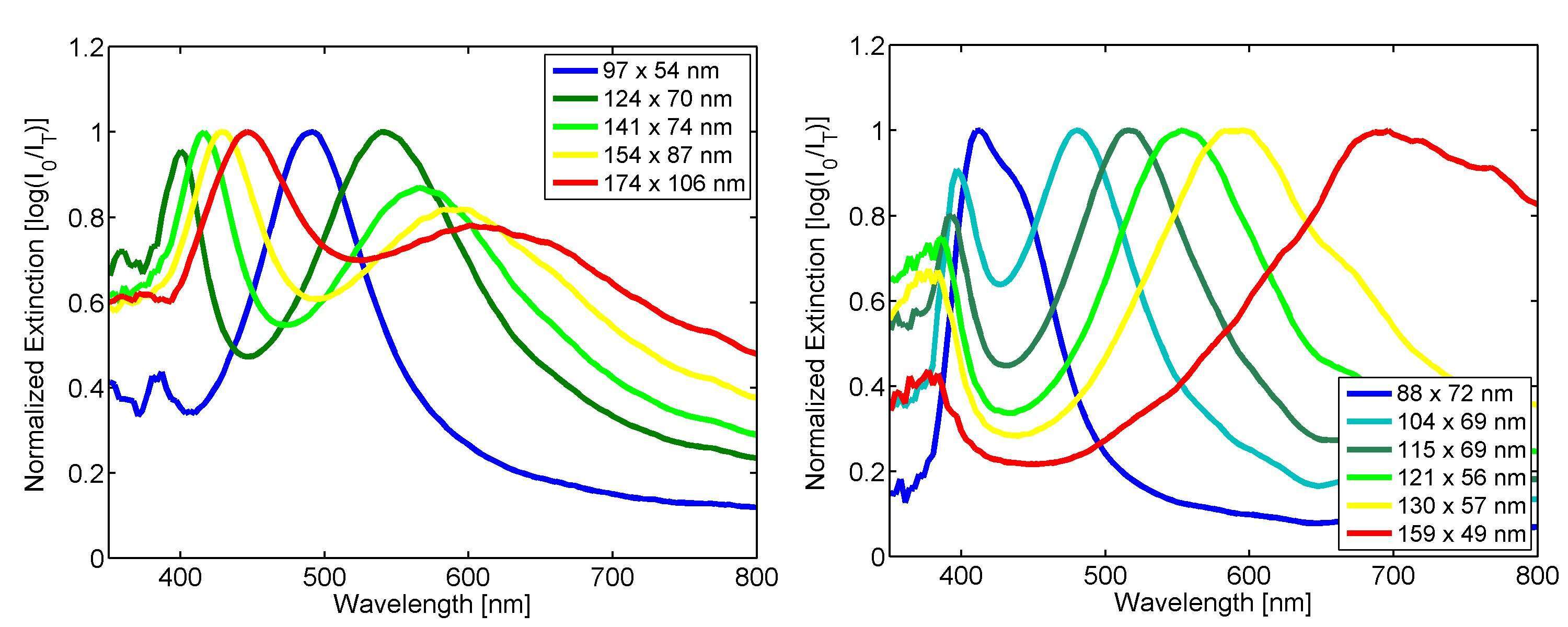
Aluminum in Plasmonics - in Search for Blue Light Enhancement
In plasmonics, the traditional materials as gold and silver offer field enhancement only for wavelenghts larger than about 500 nm. In the blue spectral region, however, they show damping due to interband transitions which strongly supress near field enhancement. Here, we discuss aluminum as a plasmonic material for enhancing the light emission from blue organic LED (OLED). As with other light emitting or collecting devices, micro- and nanostructures for enhanced light control and thus increased efficiencies have already found their way into OLEDs. Plasmonic structures are chosen as they feature particularly high mode densities and enhanced optical fields, and as their spectral properties can be tuned by tailoring the nanostructure geometry.
Aluminum nanoparticles are designed by numerical simulation, fabricated by electron beam lithography and characterized by extinction spectroscopy. Disk-like nanoparticles show a spectrally narrow plasmonic peak that can be tuned throughout the visible range, while rod-like particles show two peaks that combine to a broad extinction band (figure). In addition, the emission pattern can be tailored via the arrangement pattern of the particles. We furthermore demonstrate that the emission dynamics of the organic light emitter can be controlled by the plasmonic modes, potentially enhancing the emission efficiency.

Figure: Measured normalized extinction spectra of regular arrays of 20 nm high aluminum nanorods with axes dimensions as indicated.
veronika.tretnak@uni-graz.at
Powered by Eventact EMS